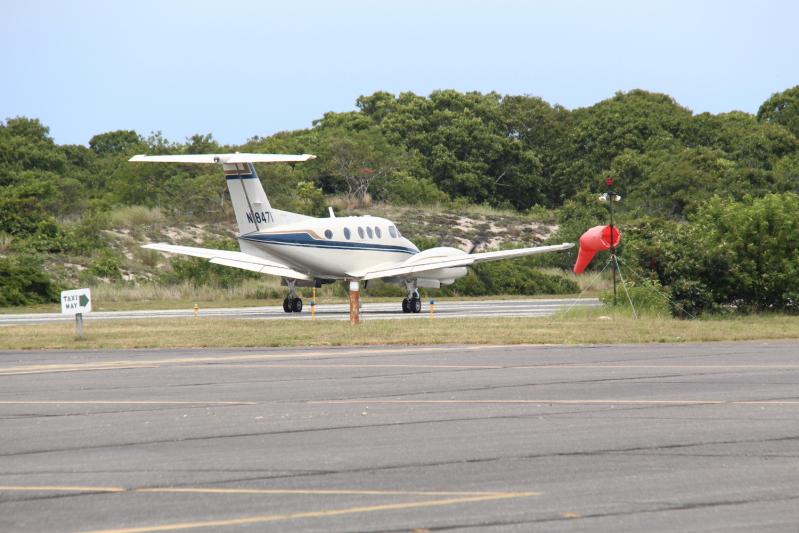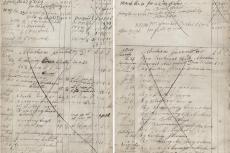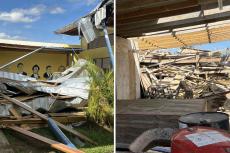The closure of Montauk Airport will lead to more traffic at East Hampton Town Airport. The big question is “How much?”
That question was left unanswered at last week’s East Hampton Town Planning Board meeting, when Montauk Airport Inc. was in front of the board for a preliminary review of its proposal to close the airport and turn it into four large residential lots and a reserve.
The airport is private and so its statistics aren’t publicly available. Thus far, despite requests to do so, its owners haven’t been willing to share them with the Planning Department.
“There’s a potential for substantial displacement of air traffic to other regional airports,” Christopher Stoecker, a town planner, told the board.
A 2021 feasibility study for the diversion of flight operations at East Hampton Town Airport, when the town board was considering closing it, offered some hints.
Considering weather patterns and restrictions due to runway size and those self-imposed by Montauk Airport (for example, it prohibits “touch and go” and nighttime flights), the airport could handle 55,644 operations, “with an average annual operations count of 15,898.”
An operation is either a takeoff or a landing. So, a plane landing and then later taking off counts for two operations. According to those numbers, the airport could handle an average of 44 takeoffs and landings daily, with much higher numbers expected through the summer months, when the airport receives roughly 75 percent of its traffic.
At a maximum, it could handle over 150 daily takeoffs and landings.
To be clear, those numbers represent the number of flights that could have been diverted to Montauk if the East Hampton airport were shut down, not the number of flights occurring at the Montauk airport.
But without data, the Planning Department thus far has been forced to use those worst-case scenario numbers.
Because Montauk Airport already limits helicopter and jet use (no helicopters are allowed between sunset and sunrise, and prior permission is required for daytime jet and helicopter operations), its closure wouldn’t be expected to increase nightly noise due to those types of flights at East Hampton Town Airport.
Mr. Stoecker noted that the proposal would likely require a lengthy environmental review per the New York State Environmental Quality Review Act.
Part of that review is measuring the impact a development would have on a neighborhood. In this instance, the neighborhood most impacted would be the neighborhood within earshot of East Hampton Town Airport. That’s a big neighborhood.
Montauk Airport Inc. would require other approvals before it is allowed to proceed with the development, including from the Federal Aviation Authority, the Suffolk County Planning Commission (because the airport is surrounded on three sides by Suffolk County parkland), and the East Hampton Town Zoning Board of Appeals, for a natural resources special permit, due to the site’s proximity to wetlands and dunes.
Because of a “grant assurance” received by the F.A.A., the airport wouldn’t be able to close until August 2027 at the earliest, but Montauk Airport Inc. said it would forgo development of the parcels until then. It is hoping, however, to receive approvals ahead of time.
The four proposed lots, ranging from 3.2 to 4.8 acres, placed along the current runway, would account for 16 acres of development, leaving another 21 acres as preserved land that could potentially link to over 1,000 acres of adjacent town and county parklands.
Reed Jones, a board member, said it seems like a good candidate for a community preservation fund purchase.
“I would say that on my Christmas list, I would like to see the town buy this parcel,” he said. “I know the town had an opportunity, I think in 2021, but for whatever reason, a deal was not able to be pulled together.”
Scott Wilson, director of land acquisition and management for the town, when asked via email if the town was currently engaged in discussions with the owner, wrote only, “This is not on my radar without a willing seller,” referring other questions to Patrick Derenze, the town’s public information officer.
So, it was unclear if the airport owner had been approached by the town before it submitted the application. If the land is successfully subdivided, its price will likely increase.
Ave Warren, another board member, suggested that the reserve area could be covenanted with a deed back to the town.
“We can certainly talk about it,” said Eric Brown, the attorney speaking for the airport.
The board also shared concerns about remediation due to past refueling operations at the airport and the impacts the development would have on the site’s sensitive natural features.
Really though, at this point, it’s all about how East Hampton Town Airport will be affected.
“I live by the East Hampton Airport,” said Michael Hansen, a board member. “We get a lot of helicopter traffic overhead. Any increase is going to disrupt a lot of poor folks in Wainscott.”




